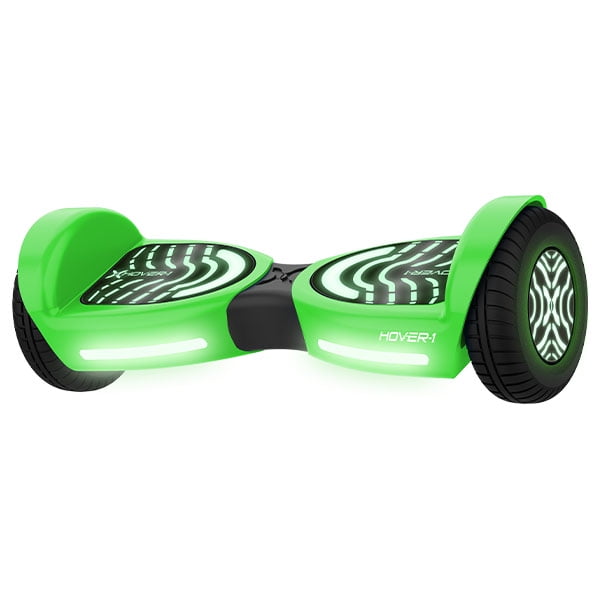Hover-1 Rocket 2.0 Hoverboard, Green, LED Lights, Max Weight 160 Lbs., Max Speed 7 Mph, Max Distance 3 Miles
Ride the rocket with the Hover-1 rocket 2.0 hoverboard. This fast, powerful, and upgraded versatile hoverboard shines even brighter with integrated LED lighting.
Ride the rocket with the Hover-1 rocket 2.0 hoverboard. This fast, powerful, and upgraded versatile hoverboard shines even brighter with integrated LED lighting. Not to mention the dual 160 w motors get you to wherever you want to go quickly. With a maximum ride range of 3 miles, you can zip back and forth at warp speed. The Hover-1 rocket 2.0 hoverboard gives you a fast burst of speed, so you can make it to your closer destinations in record time. Zoom to a friend’s house in just a few minutes, then make it back home in time for dinner. Perfect for the rambunctious child who loves to explore the neighborhood in style. Travel at the speed of life.
- Max speed: 7 mph.
- Max weight: 160 lbs.
- LED footpads.
- Bright LED headlights.
- LED wheel lights.
- Lithium-Ion battery, charger included
- 320W Motor.
Additional information
| Manufacturer Part Number | DSA-RCK2-GRN |
|---|---|
| Assembled Product Weight | 9 lb |






by Shakoor
Nice size, works great besides for the constant beeping!!! My son loves it!!!
by Stan
My son really likes it he says we could stay on for hours without having to charge it so far he has traveled about a mile and a half and came back so I guess that’s pretty good for one of these he really loves to go out for a morning stroll to the bus stop with it and then he brings it back in the evening and he says it’s really nice not much else I can say about it just wanted to say thank you for stopping by and reading my review have a happy New
by Tabitha
My girls LOVE this hoverboard. They ride around the house on it all day long. We even got a go cart ensemble to attach to it, but they seem to prefer riding on it instead. They took to it quickly and I’m hoping it makes learning to snowboard easy for them! Such a great gift! So fun. Charges quickly and last for hours too.
by Amoore
This is great! Especially for kids who are in the preteen stage. My ten year old loves it and it goes just fast enough to make it exciting but not to fast that I’m stressed over safety. The safety features are a huge bonus and overall this has been great.